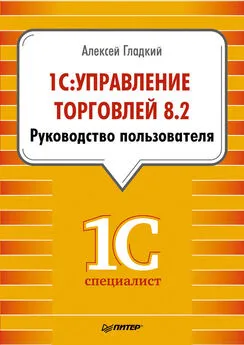Кристи Фанк - Грудь. Руководство пользователя [litres]
- Название:Грудь. Руководство пользователя [litres]
- Автор:
- Жанр:
- Издательство:Литагент 5 редакция «БОМБОРА»
- Год:2020
- Город:Москва
- ISBN:978-5-04-108737-1
- Рейтинг:
- Избранное:Добавить в избранное
-
Отзывы:
-
Ваша оценка:
Кристи Фанк - Грудь. Руководство пользователя [litres] краткое содержание
Грудь. Руководство пользователя [litres] - читать онлайн бесплатно ознакомительный отрывок
Интервал:
Закладка:
492
K. A. Ely et al., “Core Biopsy of The Breast with Atypical Ductal Hyperplasia. A Probabilistic Approach to Reporting,” American Journal of Surgical Pathology 25, no. 8 (August 2001): 1017–1021.
493
“Consensus Guideline on Concordance Assessment of Image-Guided Breast Biopsies and Management of Borderline or High-Risk Lesions,” The American Society of Breast Surgeons, открыто 9 сентября 2017 года, https://www.breastsurgeons.org/new_layout/about/statements/PDF_Statements/Concordance_and_High%20RiskLesions.pdf; M. Morrow, S. J. Schnitt, and L. Norton, “Reviews: Current Management of Lesions Associated with an Increased Risk of Breast Cancer,” National Review of Clinical Oncology 12 (2015): 227–238.
494
M. Guray and A. A. Sahin, “Benign Breast Disease s: Classification, Diagnosis, and Management,” The Oncologist 11, no. 5 (2006): 435–449; R. A. Jensen et al., “Invasive Breast Cancer Risk in Women with Sclerosing Adenosis,” Cancer 64, no. 10 (1989): 1977–1783. M. Guray and A. A. Sahin, “Benign Breast Disease s: Classification, Diagnosis, and Management,” The Oncologist 11, no. 5 (2006): 435–449; R. A. Jensen et al., “Invasive Breast Cancer Risk in Women with Sclerosing Adenosis,” Cancer 64, no. 10 (1989): 1977–1783; M. Guray and A. A. Sahin, “Benign Breast Disease s: Classification, Diagnosis, and Management,” The Oncologist 11, no. 5 (2006): 435–449.
495
B. Fisher et al., “Tamoxifen for Prevention of Breast Cancer: Report of the National Surgical Adjuvant Breast and Bowel Project P-1 Study,” Journal of the National Cancer Institute 90, no. 18 (September 1998): 1371–1388.
496
N. Houssami et al., “The Association of Surgical Margins and Local Recurrence in Women with Early-Stage Invasive Breast Cancer Treated with Breast-Conserving Therapy: A Meta-analysis,” Annals of Surgical Oncology 21, no. 3 (2014): 717–730.
497
R. E. Curtis et al., New Malignancies among Cancer Survivors: SEER Cancer Registries, 1973–2000 (Bethesda, MD: National Cancer Institute, 2006).
498
R. E. Curtis et al., “New Malignancies Following Breast Cancer,” in New Malignancies among Cancer Survivors: SEER Cancer Registries, 1973–2000 (Bethesda, MD: National Cancer Institute, 2006).
499
“Familial Breast Cancer: Collaborative Reanalysis of Individual Data from 52 Epidemiological Studies Including 58,209 Women with Breast Cancer and 101,986 Women without the Disease,” The Lancet 358, no. 9291 (2001): 1389–1399.
500
K. A. Metcalfe et al., “Breast Cancer Risks in Women with a Family History of Breast or Ovarian Cancer Who Have Tested Negative for a BRCA1 or BRCA2 Mutation,” British Journal of Cancer 100, no. 2 (2009): 421.
501
B. N. Peshkin, M. L. Alabek, and C. Isaacs, “BRCA 1/2 Mutations and Triple Negative Breast Cancers,” Breast Disease 32, no. 1–2 (2011): 25–33.
502
“Prevalence and Penetrance of BRCA1 and BRCA2 Mutations in a Population Based Series of Breast Cancer Cases. Anglian Breast Cancer Study Group,” British Journal of Cancer 83, no. 10 (2000): 1301–1308; V. A. Moyer, “Risk Assessment, Genetic Counseling, and Genetic Testing for BRCA-Related Cancer in Women: US Preventive Services Task Force Recommendation Statement,” Annals of Internal Medicine 160, no. 4 (February 2014): 271–281.
503
N. Petrucelli, M. B. Daly, and T. Pal, “BRCA1 and BRCA2 associated Hereditary Breast and Ovarian Cancer,” GeneReviews (September 1998).
504
S. Chen and G. Parmigiani, “Meta-analysis of BRCA1 and BRCA2 Penetrance,” Journal of Clinical Oncology 25, no. 11 (April 2007): 1329–1333.
505
B. N. Peshkin, M. L. Alabek, and C. Isaacs, “BRCA 1/2 Mutations and Triple Negative Breast Cancers,” Breast Disease 32, nos. 1–2 (2011): 25–33.
506
K. Metcalfe et al. “Contralateral Breast Cancer in BRCA1 and BRCA2 Mutation Carriers,” Journal of Clinical Oncology 22, no. 12 (June 2004): 2328–2335.
507
S. Panchal et al., “Does Family History Predict the Age at Onset of New Breast Cancers in BRCA1 and BRCA2 Mutation‐Positive Families?” Clinical Genetics 77, no. 3 (2010): 273–279.
508
E. Mocci et al., “Risk of Pancreatic Cancer in Breast Cancer Families from The Breast Cancer Family Registry, Cancer Epidemiology, Biomarkers and Prevention 22, no. 5 (May 2013): 803–811.
509
D. Easton et al., “Cancer Risks in BRCA2 Mutation Carriers.” Journal of the National Cancer Institute 91, no. 15 (August 1999): 1310–1316.
510
A. Liede, B. Y. Karlan, and S. A. Narod, “Cancer Risks for Male Carriers of Germline Mutations in BRCA1 or BRCA2: A Review of the Literature.” Journal of Clinical Oncology 22, no. 4 (February 2004): 735–742.
511
D. Easton et al., “Cancer Risks in BRCA2 Mutation Carriers,” Journal of the National Cancer Institute 91, no. 15 (August 1999): 1310–1316.
512
L. Castéra et al., “Next-generation Sequencing for the Diagnosis of Hereditary Breast and Ovarian Cancer Using Genomic Capture Targeting Multiple Candidate Genes,” European Journal of Human Genetics 22, no. 11 (2014): 1305.
513
K. D. Gonzalez et al., “Beyond Li Fraumeni Syndrome: Clinical Characteristics of Families with p53 Germline Mutations,” Journal of Clinical Oncology 27, no. 8 (2009): 1250–1256.
514
P. D. Pharoah, P. Guilford, and C. Caldas, “Incidence of Gastric Cancer and Breast Cancer in CDH1 (E-cadherin) Mutation Carriers from Hereditary Diffuse Gastric Cancer Families,” Gastroenterology 121, no. 6 (2001): 1348–1353.
515
M. K. Schmidt et al., “Breast Cancer Survival and Tumor Characteristics in Premenopausal Women Carrying the CHEK2* 1100delC Germline Mutation,” Journal of Clinical Oncology 25, no. 1 (2006): 64–69.
516
M. K. Schmidt et al., “Breast Cancer Survival and Tumor Characteristics in Premenopausal Women Carrying the CHEK2* 1100delC Germline Mutation,” Journal of Clinical Oncology 25, no. 1 (2006): 64–69.
517
B. Zhang et al., “Genetic Variants Associated with Breast-Cancer Risk: Comprehensive Research Synopsis, Meta-analysis, and Epidemiological Evidence,” The Lancet Oncology 12, no. 5 (May 2011): 477–488.
518
D. F. Easton et al., “Gene-Panel Sequencing and the Prediction of Breast-Cancer Risk,” New England Journal of Medicine 372, no. 23 (2015): 2243–2257.
519
A. Broeks et al., “Identification of Women with an Increased Risk of Developing Radiation-Induced Breast Cancer: A Case Only Study,” Breast Cancer Research 9, no. 2 (2007): R26.
520
A. Broeks et al., “Identification of Women with an Increased Risk of Developing Radiation-Induced Breast Cancer: A Case Only Study,” Breast Cancer Research 9, no. 2 (2007): R26.
521
F. J. Couch et al., “Inherited Mutations in 17 Breast Cancer Susceptibility Genes among a Large Triple-Negative Breast Cancer Cohort Unselected for Family History of Breast Cancer,” Journal of Clinical Oncology 33, no. 4 (2015): 304–311.
522
К сожалению, в нашей стране подобного закона еще не принято.
523
National Comprehensive Cancer Network, “Genetic/Familial High-Risk Assessment: Breast and Ovarian,” NCCN Clinical Practice Guidelines in Oncology, открыто 19 августа 2017 года, https://www.tri-kobe.org/nccn/guideline/gynecological/english/genetic_familial.pdf.
524
C. K. Kuhl et al., “Mammography, Breast Ultrasound, and Magnetic Resonance Imaging for Surveillance of Women at High Familial Risk for Breast Cancer,” Journal of Clinical Oncology 23, no. 33 (2005): 8469–8476.
525
S. Iodice et al., “Oral Contraceptives and Breast or Ovarian Cancer Risk in BRCA 1/2 Carriers: A Meta-analysis,” European Journal of Cancer 46, no. 12 (August 2010): 2275–2284. Глава седьмая. Лекарства и операции, которые стоит рассмотреть
526
J. Cuzick et al., “Preventive Therapy for Breast Cancer: A Consensus Statement,” The Lancet Oncology 12, no. 5 (2011): 496–503.
527
P. E. Goss et al., “Exemestane for Breast-Cancer Prevention in Postmenopausal Women,” New England Journal of Medicine 364, no. 25 (2011): 2381–2391.
528
J. Cuzick et al., “Anastrozole for Prevention of Breast Cancer in High-Risk Postmenopausal Women (IBIS-II): An International, Double-Blind, Randomised Placebo-Controlled Trial,” The Lancet 383, no. 9922 (2014): 1041–1048.
529
L. E. Rutqvist et al., “Contralateral Primary Tumors in Breast Cancer Patients in a Randomized Trial of Adjuvant Tamoxifen Therapy,” Journal of the National Cancer Institute 83: 1299–1306.
530
B. Fisher et al., “Tamoxifen for Prevention of Breast Cancer: Report of the National Surgical Adjuvant Breast and Bowel Project P-1 Study,” Journal of the National Cancer Institute 90, no. 18 (September 1998): 1371–1388.
531
J. Cuzick et al., “Tamoxifen and Breast Density in Women at Increased Risk of Breast Cancer,” Journal of the National Cancer Institute 96, no. 8 (April 2004): 621–628.
532
M. C. King et al.,“Tamoxifen and Breast Cancer Incidence among Women with Inherited Mutations in BRCA1 and BRCA2: National Surgical Adjuvant Breast and Bowel Project (NSABP-P1) Breast Cancer Prevention Trial,” Journal of the American Medical Association 286, no. 18 (2001): 2251–2256.
533
K. A. Phillips et al., “Tamoxifen and Risk of Contralateral Breast Cancer for BRCA1 and BRCA2 Mutation Carriers,” Journal of Clinical Oncology 31, no. 25 (2013): 3091–3099.
534
N. Orr et al., “Fine-Mapping Identifies Two Additional Breast Cancer Susceptibility Loci at 9q31.2,” Human Molecular Genetics 24, no. 10 (May 2015): 2966–2984.
535
A. C. Antoniou et al., “Common Alleles at 6q25.1 and 1p11.2 Are Associated with Breast Cancer Risk for BRCA1 and BRCA2 Mutation Carriers,” Human Molecular Genetics 20, no. 16 (2011): 3304–3321.
536
V. G. Vogel et al., “Effects of Tamoxifen vs Raloxifene on the Risk of Developing Invasive Breast Cancer and Other Disease Outcomes: The NSABP Study of Tamoxifen and Raloxifene (STAR) P-2 Trial,” Journal of the American Medical Association 295, no. 23 (June 2006): 2727–2741.
Читать дальшеИнтервал:
Закладка:
![Обложка книги Кристи Фанк - Грудь. Руководство пользователя [litres]](/books/1062698/kristi-fank-grud-rukovodstvo-polzovatelya-litre.webp)









